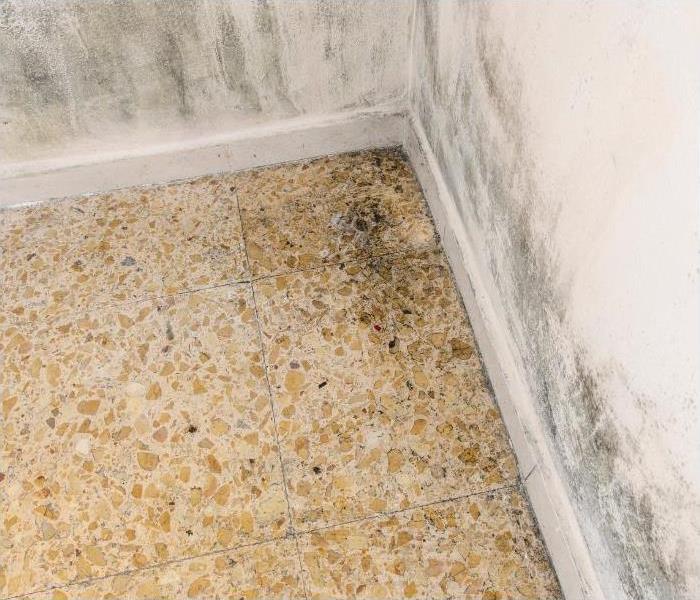Why Does Mold Happen? Here are a Few Reasons
11/22/2021 (Permalink)
The key to mold control in Pulaski, TN is moisture control. Understanding how to control mold in your commercial building can help employees feel more comfortable in their work environment while preventing expensive repairs from mold and water damage. It's important to perform routine maintenance so you can pinpoint potential water entry issues and properly address them early before they have the chance to become a critical issue. This article will provide you with helpful knowledge necessary to understand why mold can happen in your commercial building in the first place.
Understanding Mold-Causing Condensation
Mold is everywhere and can't be completely eliminated. However, it requires moisture to thrive and spread. Knowing what can cause that condensation will help you pinpoint problem spots and solve them before they can become serious issues.
Condensation forms when warm air encounters a colder surface. Cold surfaces naturally occur with large temperature differences between the inside and the outside of a building. This naturally occurring event where water vapor moves through building materials from moist to dry air is called Diffusion.
Capillary Action, where small openings or pores in building materials allow water to wick upwards into the building, can be another source of water entry. This can be seen in materials like drywall, wood flooring, plywood, and other water-sensitive building materials.
Stack Effect is where moist air rises from a crawlspace or basement into the building's living spaces.
Another source of condensation or water damage can be forceful winds. When the wind combines with driving rain, water can seep into a commercial building or home through cracks and crevices that are normally unseen.
Proper ventilation, building design & maintenance, and a well-functioning AC system help prevent that condensation from becoming a mold-causing issue.
Common Sources of Moisture and Water Damage
The most common place you'll see condensation is on windows, especially if they are foggy or have water spots. Window condensation happens when cool outside air encounters warm indoor air near the window.
Air conditioning ducts are notorious for collecting moisture that then causes mold to grow inside them. The best thing to do to prevent AC issues is to establish a routine maintenance schedule to ensure proper functioning HVAC systems.
Vinyl Wallpaper can also often harbor mold behind it because of diffusion. If installed on outer walls that are more exposed to temperature differences, this issue is more likely to occur.
Condensation on cool metal surfaces such as copper pipes can be another common source of moisture and mold.
Failing building vapor barriers can be more serious moisture and mold-causing issues. When building foundations or walls are installed, usually vapor barriers such as 6mil plastic sheeting, house wrap, or primer paint are also installed to create waterproofing separation between the inside and outside of the building. If too many holes, ruptures, cracks, or damage occur to these vapor barriers, moisture entry is much more likely to occur.
While there are many potential causes for moisture and water damage to a home, getting rid of and preventing mold isn't just an aesthetic matter. That's why SERVPRO of Maury & Giles Counties uses advanced protocols to quickly locate, identify and remediate mold infestations in your home.
Call us today at (931) 388-4248 for rapid 24-hour assistance.


 24/7 Emergency Service
24/7 Emergency Service
